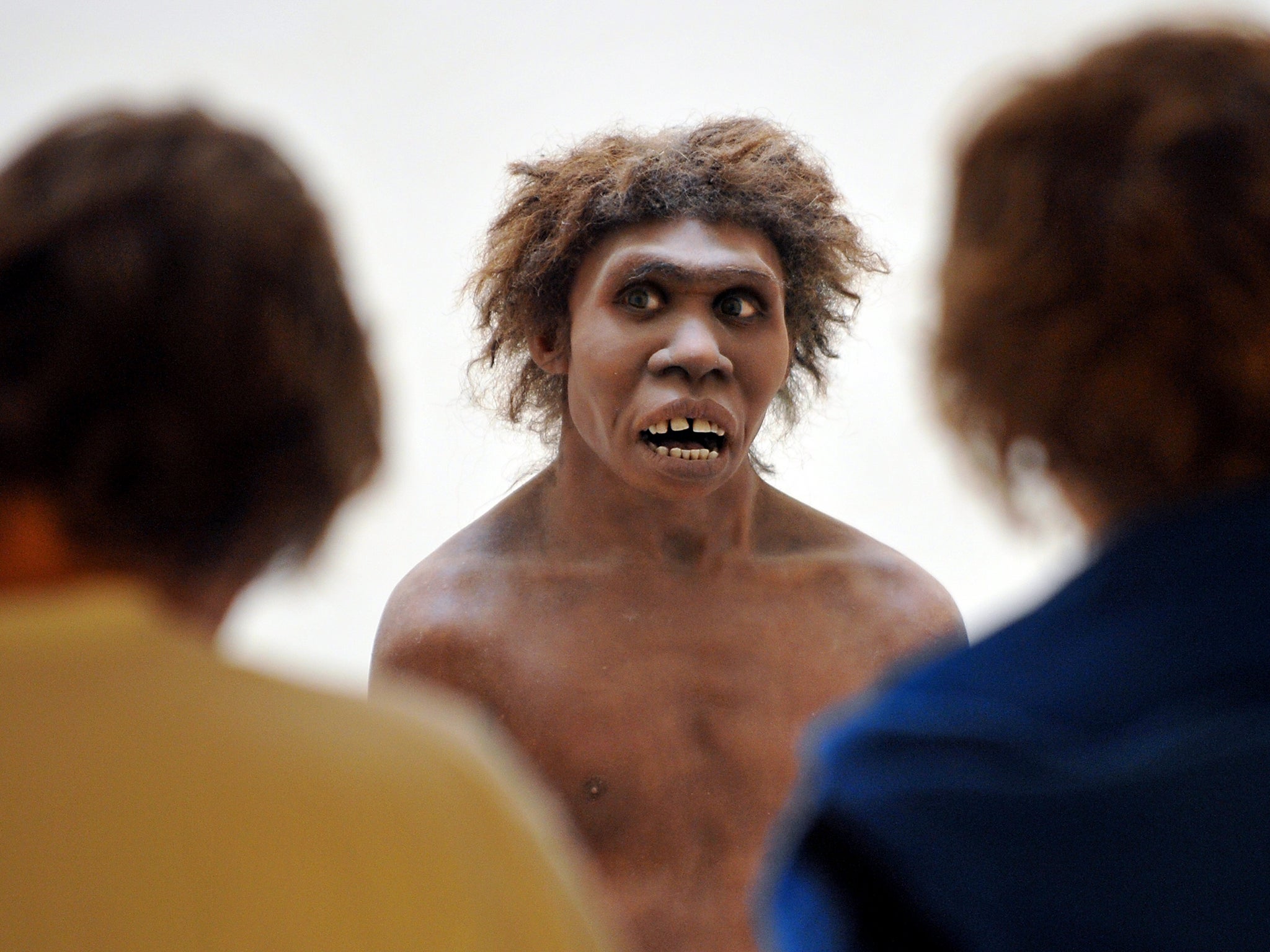Archaeologists unearth remains of oldest Norman ever found which ‘fills gap in our knowledge of pre-Neanderthal evolution’
The arm bones, dating from 200,000 years ago, are 'the only known example from northern Europe'

Your support helps us to tell the story
From reproductive rights to climate change to Big Tech, The Independent is on the ground when the story is developing. Whether it's investigating the financials of Elon Musk's pro-Trump PAC or producing our latest documentary, 'The A Word', which shines a light on the American women fighting for reproductive rights, we know how important it is to parse out the facts from the messaging.
At such a critical moment in US history, we need reporters on the ground. Your donation allows us to keep sending journalists to speak to both sides of the story.
The Independent is trusted by Americans across the entire political spectrum. And unlike many other quality news outlets, we choose not to lock Americans out of our reporting and analysis with paywalls. We believe quality journalism should be available to everyone, paid for by those who can afford it.
Your support makes all the difference.On a bend of the river Seine near Rouen in Normandy, archaeologists have found the remains of the oldest Norman ever discovered.
The three bones from the left arm of a pre-Neanderthal should shed fresh light on a little-known period. In particular, they could help scientists to understand the evolution of the squat, muscular hunters who died out 30,000 to 40,000 years ago, just after the first humans arrived in what is now Europe.
The discovery of the bones at Tourville-la-Rivière, 14km south of Rouen, is exceptional because “this is a period with very few fossils”, according to Bruno Maureille, a palaeontologist at the National Centre for Scientific Research. He said the arm bones, dating from 200,000 years ago, in the Middle Pleistocene era, were “the only known example from northern Europe”.
Jean-Philippe Faivre, a colleague at the centre, said that although similar discoveries had been made in the UK and Germany, the discovery in Normandy “fills a gap in our knowledge about how they evolved in this geographical area, and how they adapted to their environment”.
Debate continues over the origins of Neanderthals but they appear to have evolved in Europe in isolation. One expert said the Tourville specimen had echoes of the discovery of “Boxgrove Man”, whose fossilised tibia was found in West Sussex in 1993. “The English Channel didn’t exist in those days,” the expert added.
The arm bones – a humerus, radius and ulna – were found by archaeologists from the French National Institute for Preventive Archaeological Research (Inrap) at the end of a four-and-a-half-month dig on 10 September 2010. It has taken until now to complete scientific analysis, and today’s press conference coincided with publication of the find by 18 experts from France, Australia, the US and Spain in the open-access scientific journal PLOS ONE.
The bones come from a single person whose sex is not known, but who may have been an older teenager or an adult. The fossils and human occupation at the prehistoric site in Tourville date from 236,000BC to 183,000BC.
Dr Maureille said: “The analysis tells us that Tourville man is closer to the Neanderthals than to modern man.”
He pointed out that the humerus has an unusual bone ridge where part of the deltoid muscle is attached. The ridge has been caused by a rupture of the ligament, which may have been due to repetitive movements, such as throwing. Similar bone ridges have been observed on modern athletes, according to Mr Maureille.
Archaeologists have known for a long time about the presence of animals and flint at Tourville. A first dig took place there in 2008, followed by the 2010 dig in a sand and gravel quarry which produced the latest discovery.
Céline Bémilli, an archaeozoologist with Inrap, said the excavations had produced the remains of about 15 animal species, including horses, deer, wolves, hares and even the first panther to be found at Tourville. Other finds from the same interglacial era, ending about 200,000 years ago, have included parts of skulls excavated in northern France at Biache-Saint-Vaast. Only about a dozen such sites exist throughout Europe.
Join our commenting forum
Join thought-provoking conversations, follow other Independent readers and see their replies
Comments